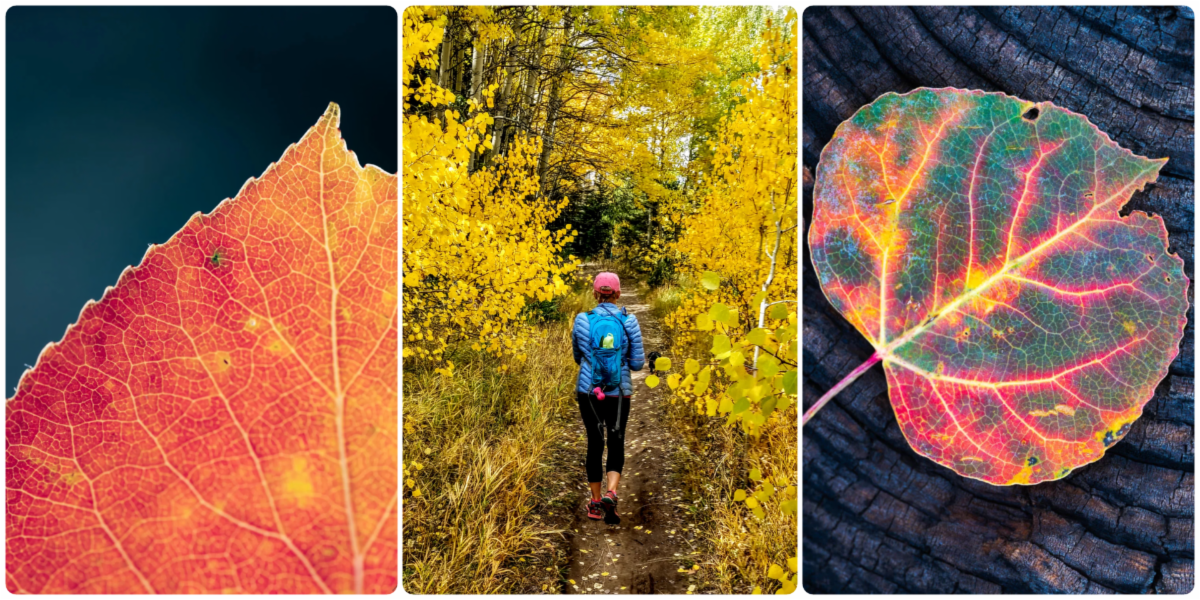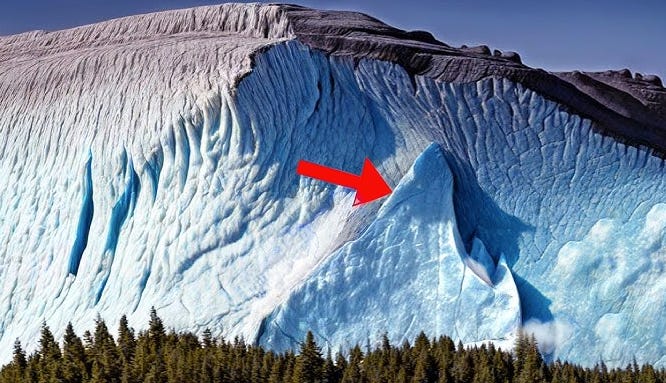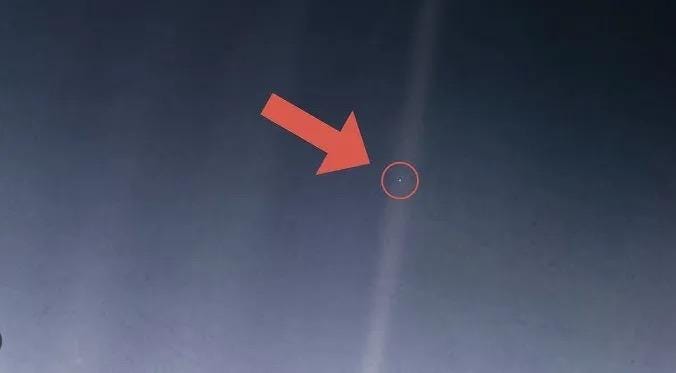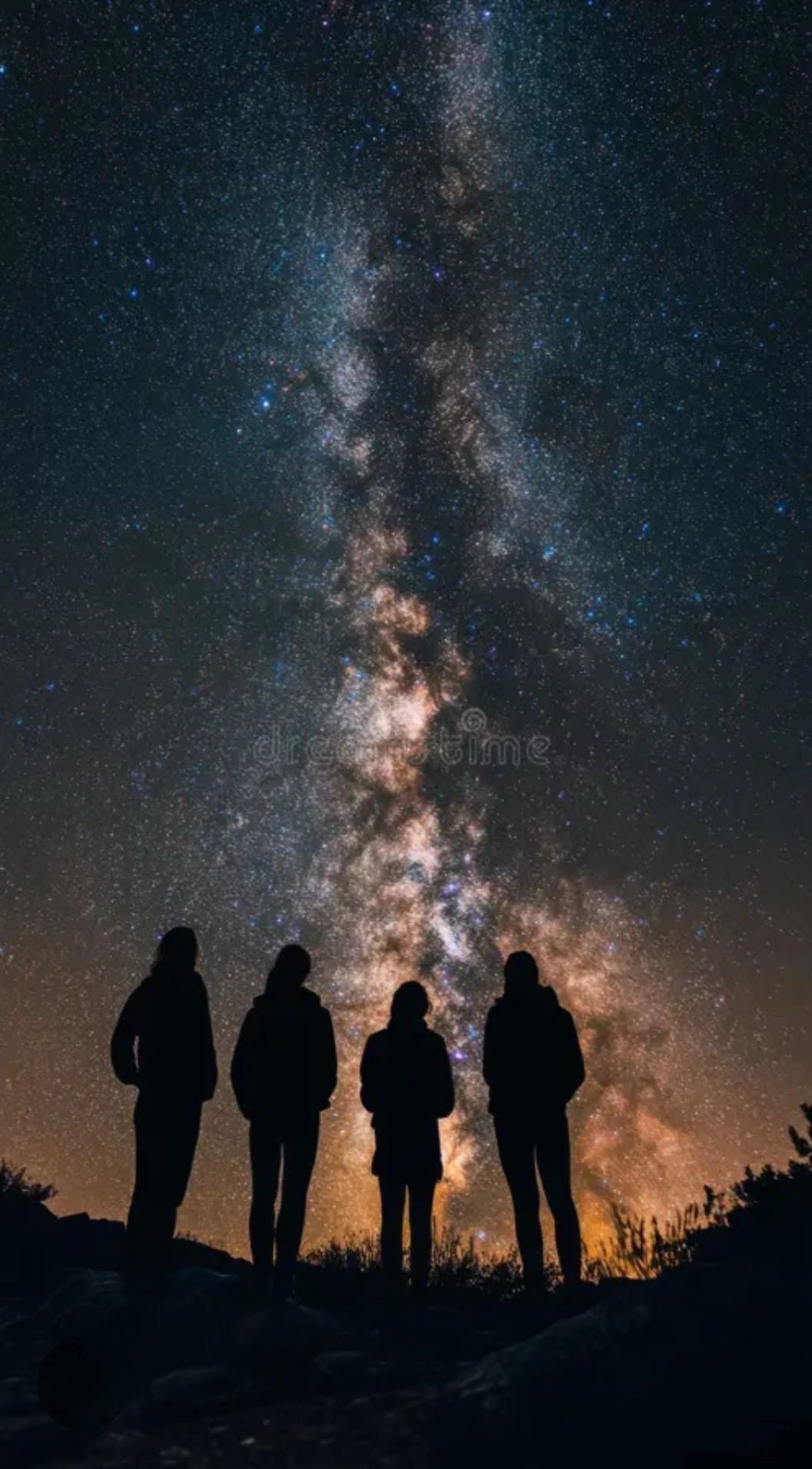Awe is the feeling of being in the presence of a vast mystery that transcends your current understanding of the world. --Dacher Keltner
When I was a kid, my Swedish grandpa told me about hearing the Northern Lights. “You mean you saw them,” I corrected. “Nej, yust listen. Da light in da vind crackles.”
“Tall tale,” I thought. But all these years later, science has shown it’s true. The Northern Lights can, indeed, be heard. Grandpa was right.
Awesome.
What Is Awe, Anyway?
Awe is that humbling, heart-expanding moment when we encounter something vast that challenges our understanding of the world and ourselves. Think majestic mountains, sublime music, acts of moral bravery, even crazy ideas like light making noise. And somehow, you’re affected by it. Mysteriously, you’re a part of it.
Wonder is awe’s quieter sibling, a curious delight in the ordinary, like a spider’s web glistening in the morning dew. Or an aspen leaf changing color in the fall, its fractal vein patterns unmasking in the process.
Together, they’re a natural boost to your soul’s battery—prescription not required.
Dacher Keltner, a UC Berkeley psychologist who literally wrote the book on awe--Awe: The New Science of Everyday Wonder and How It Can Transform Your Life--says that awe is more than a “wow” moment. It’s a physiological reset button.
Because awe shifts how we see ourselves, often shrinking our ego in the best way. Keltner says awe-struck people share two key traits: (1) they perceive vastness (i.e., they recognize when they’re in the presence of something huge in scope, bigger than themselves); and (2) they internalize and integrate it (i.e., they let the experience change them, literally rewiring their brains and how they think).
Whether it’s a brilliant aurora in Sweden, a changing aspen grove in Colorado, or just the quiet help of a neighbor, awe and wonder hit when the world shows itself to be bigger, more beautiful, more generous than expected. And your brain accommodates accordingly.
Why Does Awe Feel So Good?
Here’s the science:
Mind Reset. Awe silences the critic in your head. It dials down anxiety, revs up creativity, and makes time feel expansive and spacious. Studies show it can even ease PTSD and depression.
Body Upgrade. Awe calms your nervous system and flips the script from fight-or-flight stress to rest-and-digest recovery. Oxytocin—the bonding hormone—spikes. Inflammation markers drop.
Relationship Boost. Awe improves your people skills, inclining you toward kindness, sharing, helping, and connecting with others. Psychologists call it “collective effervescence”—that goosebump-y sense of togetherness you get dancing in a crowd or singing at a concert.
Keltner studied awe across 26 countries and revealed its universal, cross-cultural pull. Humans are hard-wired for it. But, of course, we must first open our eyes and ears. Minds and hearts, too.
Real-Life Awe Moments
Sometimes, awe hits in ways that burn into your memory and change your life.
Take astronaut Ron Garan, who tells of seeing Earth from the space station—its thin, glowing atmosphere separating us from the void—and how that experience rewired his perspective. He called it the “overview effect,” a profound sense of unity that made global problems feel personal and urgent.
Or the hiker in Patagonia who tells of stumbling upon a glacier calving into a lake, the thunderous crack and turquoise shimmer leaving her feeling “insignificant yet alive.” It was like she’d touched something eternal.
And then there’s the famous “pale blue dot” photo of Earth taken from Voyager as it left our solar system, some 3.7 billion miles away. “We live on a mote of dust suspended in a sunbeam,” astronomer Carl Sagan observed.
Awe truly can shift perspectives, reshaping how we see ourselves and the world.
Micro-Dosing Awe in Your Day
You don’t need to board the space station or trek to Patagonia to tap into this. Here are small, practical ways to invite awe and wonder into your daily routine:
Pause for the Ordinary
Slow down during the mundane moments—sipping coffee, exercising, whatever. Notice the warmth of the mug or the rhythm of your breath. Tiny shifts in awareness can spark wonder and slow time.
Take an Awe Walk
Step outside and take a stroll. Look for patterns—leaves, clouds, even cracks in the sidewalk. Studies show these walks dial down stress and boost openness to connection. And ditch the headphones. Let the world’s sounds wash over you.
Tune Into Your Senses
Unplug. Feel your feet on the ground. Smell the air after a rain. Be where you are, fully. This sensory focus can ignite wonder and ease anxiety. No gear required.
Let Music and Art In
Play a song that hits you in the feels. Linger over a poem that speaks your language. Open up to art that gives you the chills in a good way. This is relatable beauty that fuels your own creativity.
Jot Down a Memory
Write a quick note about a time you were awed--by a sunset, a carpet of stars overhead, the birth of a child. Recalling these moments boosts feelings of well-being and generosity.
Find the Collective Spark
Finally, seek the “collective effervescence” mentioned earlier. Reach out and connect with others in whatever way works for you--dancing, singing, talking, even walking in sync together. This shared energy fosters belonging, and belonging fosters wonder.
Notice What’s Already Here
Awe and wonder aren’t about escaping life’s mess. They’re about noticing the beauty already here and being changed by it. From a sunrise off your deck to a neighbor’s kindness to the steam rising off your morning coffee, these micro-doses are like seeds: plant them daily, and they grow into resilience, connection, and maybe a quieter mind.
And every once in a while, put yourself in the presence of vastness. Then, as my grandpa said, “yust listen.” You never know what awe might have to say to you.
REFLECT: What moments of awe and wonder stand out in your life? How have they impacted your well-being? How might you cultivate more of these experiences?











